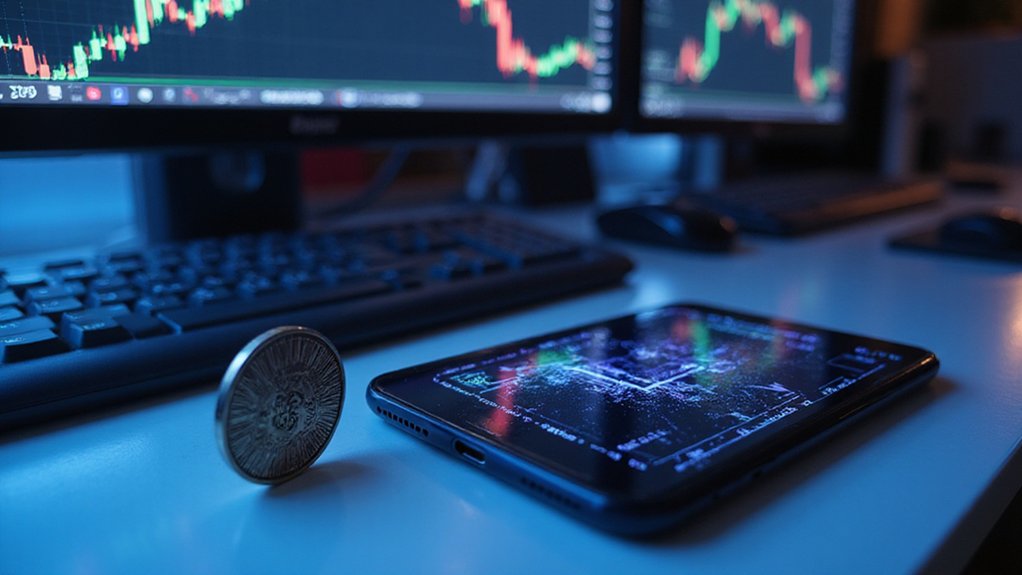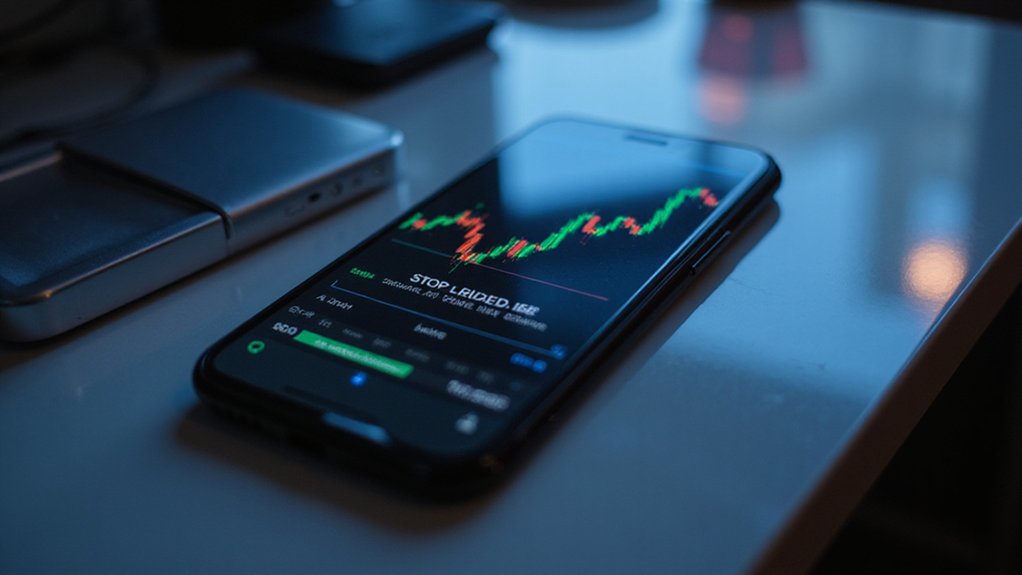Ripple (XRP) currently trades between $2.07-$2.09 USD (approximately £1.56-£1.57), sitting 46% below its all-time high of $3.84. Despite recent monthly declines of 18-19%, XRP boasts impressive annual appreciation of 284-316%, climbing from a mere $0.33 to highs above $3. With a substantial $122 billion market capitalization and robust daily trading volumes exceeding $1.4 billion, this fourth-largest cryptocurrency maintains relatively restrained volatility compared to its more capricious altcoin siblings. The recent SEC litigation resolution may unleash significant upside potential.

When investors inquire about Ripple’s value, they’re confronting a digital asset whose price belies its complex market position.
Currently trading at approximately $2.07-$2.09 USD (£1.56-£1.57), XRP maintains modest daily fluctuations typically within 1% ranges—a relative stability that obscures its remarkable 284-316% annual appreciation.
Despite this growth, XRP remains 46% below its all-time high of $3.84, illustrating the cryptocurrency’s characteristic volatility curve.
The token’s market capitalization—that inexact yet indispensable metric of crypto relevance—sits around $122 billion, positioning XRP as the fourth-largest cryptocurrency by market value.
This capitalization reflects approximately 58.4 billion tokens in circulation against a maximum supply of 100 billion, a scarcity mechanism that (theoretically, at least) provides structural support for valuation.
Ripple Labs maintains significant holdings in escrow, releasing tokens methodically to manage liquidity without flooding markets[1].
XRP’s robust 24-hour trading volume, ranging between $1.46-$2.5 billion across global exchanges, demonstrates liquidity that would make traditional asset managers raise an eyebrow—perhaps in envy.
This volume facilitates price discovery and tight spreads, essential characteristics for institutional participation.
After purchasing XRP on exchanges like Coinbase or Binance, investors should consider transferring their assets to a hardware wallet for maximum security against potential exchange vulnerabilities.
The token’s monthly performance, however, reveals recent headwinds with 18-19% declines despite overall yearly strength.
Price volatility—cryptocurrency’s perennial companion—manifests in XRP’s yearly range spanning from lows of $0.33 to highs approaching $3.40.
What other asset class routinely presents potential 10x movements within twelve months?
Yet compared to smaller altcoins, XRP exhibits relatively restrained fluctuations, maintaining daily movements typically under 3%.
The recent news that the SEC dropped its appeal against Ripple has positively influenced market sentiment, potentially clearing the path for an XRP ETF.
Technical analysts have identified a potential falling wedge pattern on XRP’s daily chart, with ambitious price targets around $3.8 and $5 based on Fibonacci ratio projections.
The valuation question ultimately transcends current price points.
XRP’s position as the fourth-ranked cryptocurrency reflects market confidence in its utility, adoption potential, and regulatory prospects—a triumvirate of factors that ultimately dictates value beyond day-to-day price action.
For investors, the token’s price represents merely the current consensus on these underlying fundamentals, a consensus perpetually subject to reassessment as market conditions evolve.
Frequently Asked Questions
How Does XRP Differ From Other Major Cryptocurrencies?
XRP differs from Bitcoin and Ethereum in several fundamental ways.
It processes transactions substantially faster (1,500 TPS versus Bitcoin’s 7), with 3-5 second settlement times.
Unlike its competitors, XRP can’t be mined—all tokens were pre-mined at creation.
Its consensus protocol requires only 80% validator agreement rather than proof-of-work, making it more energy-efficient.
Perhaps most distinctively, Ripple Labs maintains considerable influence through its escrow holdings, creating a hybrid centralized-decentralized model focused primarily on institutional payment infrastructure.
Is Ripple a Good Investment for Long-Term Growth?
Ripple presents a compelling case for long-term investment, with its $200 trillion addressable market dwarfing its current $125 billion valuation—though such potential remains theoretical until major financial institutions actually adopt the technology. XRP’s finite supply creates favorable scarcity dynamics, yet investors should weigh this against significant regulatory uncertainties and the company’s controversial token sales practices. Expert forecasts range from bearish ($1.35 by 2025) to bullish ($10.54 by 2030), reflecting the polarized outlook on this particular digital asset.
Can I Mine XRP Like Bitcoin?
No, XRP cannot be mined like Bitcoin.
While Bitcoin miners compete to solve cryptographic puzzles for new coins, XRP’s entire 100 billion supply was pre-mined at launch.
XRP utilizes a validator consensus model (RPCA) rather than proof-of-work mining, achieving transaction finality in mere seconds.
Anyone claiming to offer “XRP mining” services is, rather predictably, peddling falsehoods.
The only legitimate ways to acquire XRP involve purchasing on exchanges or participating in certain XRP-based DeFi platforms.
How Do Ripple’s Regulatory Challenges Affect Xrp’s Value?
Ripple’s regulatory challenges create a precarious tug-of-war for XRP’s valuation.
The SEC case dismissal triggered a notable price surge, demonstrating how regulatory clarity positively impacts investor confidence.
Conversely, security classification threats and cross-jurisdictional compliance burdens continue to suppress potential growth.
XRP remains caught in this regulatory purgatory—where each court ruling or regulatory announcement sends tremors through its market price, creating volatility that’s become almost comically predictable to seasoned observers.
What Factors Cause XRP Price Volatility?
XRP price volatility stems from multiple interrelated factors.
Regulatory challenges (particularly the SEC lawsuit) create persistent uncertainty, while global economic conditions and broader crypto market trends exert significant influence.
Technical factors like support levels and trading volumes amplify movements.
Additionally, investor behavior—including whale activity, leverage-driven liquidations, and panic selling—can trigger cascading price swings.
Exchange delistings, competition from alternative cryptocurrencies, and media-driven sentiment further contribute to XRP’s characteristically unpredictable price action, often independent of Ripple’s fundamental business developments.









